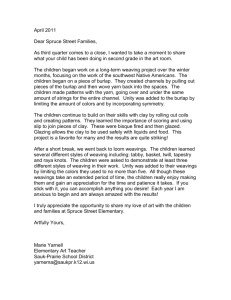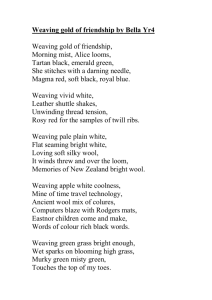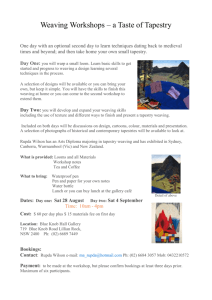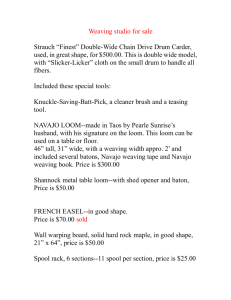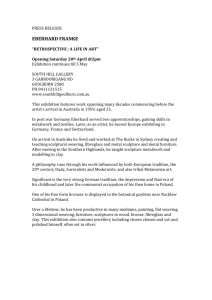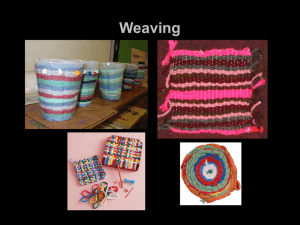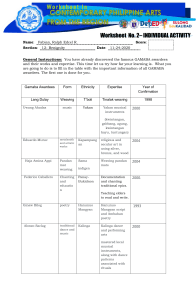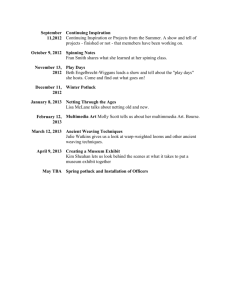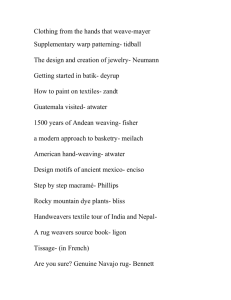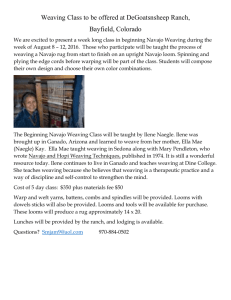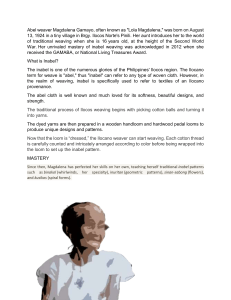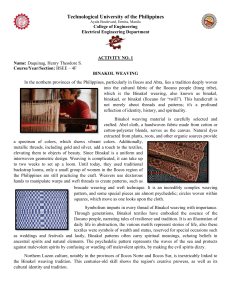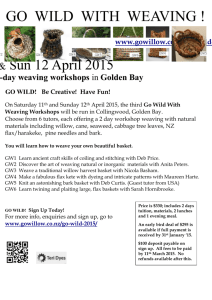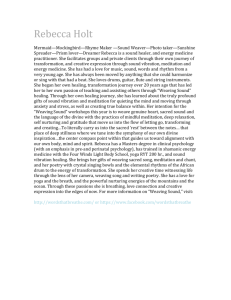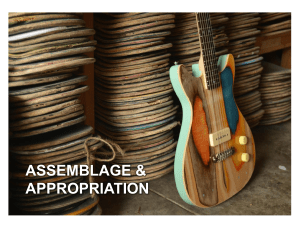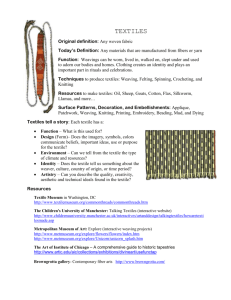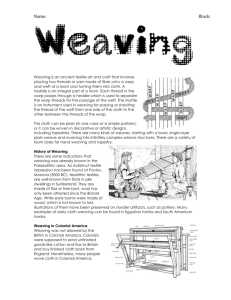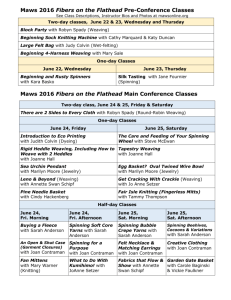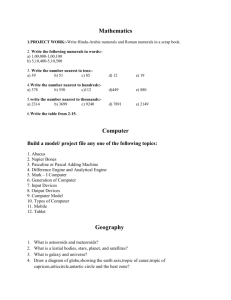Bahupono Mujeres Artesanas Ipeti Embera Description We have
advertisement
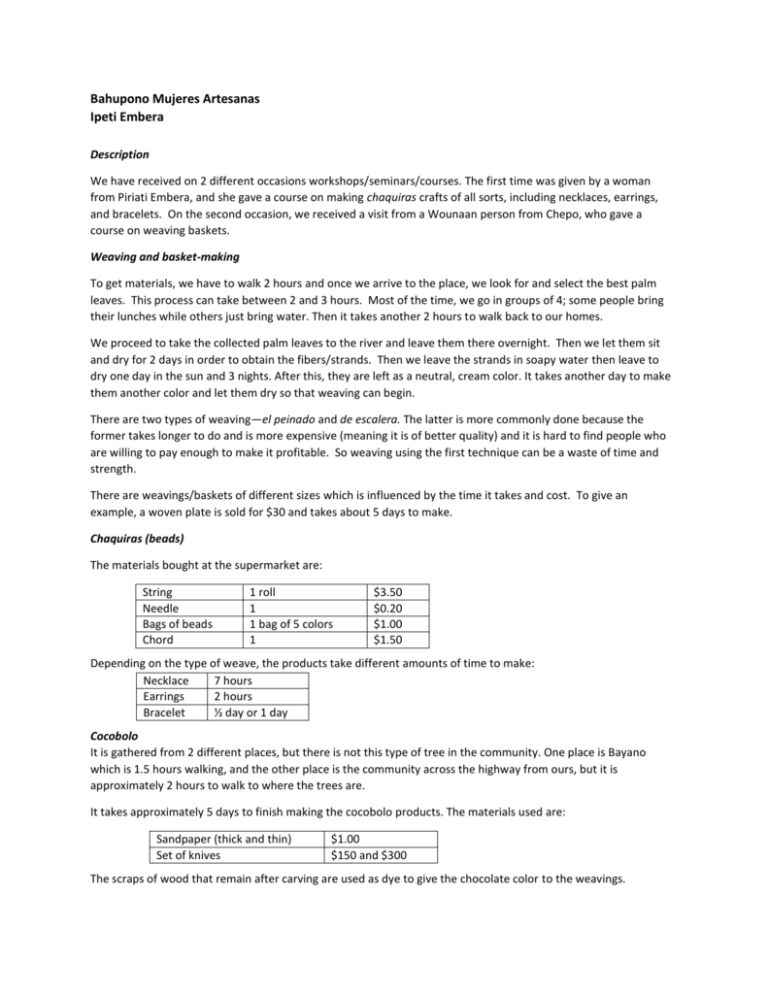
Bahupono Mujeres Artesanas Ipeti Embera Description We have received on 2 different occasions workshops/seminars/courses. The first time was given by a woman from Piriati Embera, and she gave a course on making chaquiras crafts of all sorts, including necklaces, earrings, and bracelets. On the second occasion, we received a visit from a Wounaan person from Chepo, who gave a course on weaving baskets. Weaving and basket-making To get materials, we have to walk 2 hours and once we arrive to the place, we look for and select the best palm leaves. This process can take between 2 and 3 hours. Most of the time, we go in groups of 4; some people bring their lunches while others just bring water. Then it takes another 2 hours to walk back to our homes. We proceed to take the collected palm leaves to the river and leave them there overnight. Then we let them sit and dry for 2 days in order to obtain the fibers/strands. Then we leave the strands in soapy water then leave to dry one day in the sun and 3 nights. After this, they are left as a neutral, cream color. It takes another day to make them another color and let them dry so that weaving can begin. There are two types of weaving—el peinado and de escalera. The latter is more commonly done because the former takes longer to do and is more expensive (meaning it is of better quality) and it is hard to find people who are willing to pay enough to make it profitable. So weaving using the first technique can be a waste of time and strength. There are weavings/baskets of different sizes which is influenced by the time it takes and cost. To give an example, a woven plate is sold for $30 and takes about 5 days to make. Chaquiras (beads) The materials bought at the supermarket are: String Needle Bags of beads Chord 1 roll 1 1 bag of 5 colors 1 $3.50 $0.20 $1.00 $1.50 Depending on the type of weave, the products take different amounts of time to make: Necklace 7 hours Earrings 2 hours Bracelet ½ day or 1 day Cocobolo It is gathered from 2 different places, but there is not this type of tree in the community. One place is Bayano which is 1.5 hours walking, and the other place is the community across the highway from ours, but it is approximately 2 hours to walk to where the trees are. It takes approximately 5 days to finish making the cocobolo products. The materials used are: Sandpaper (thick and thin) Set of knives $1.00 $150 and $300 The scraps of wood that remain after carving are used as dye to give the chocolate color to the weavings.

